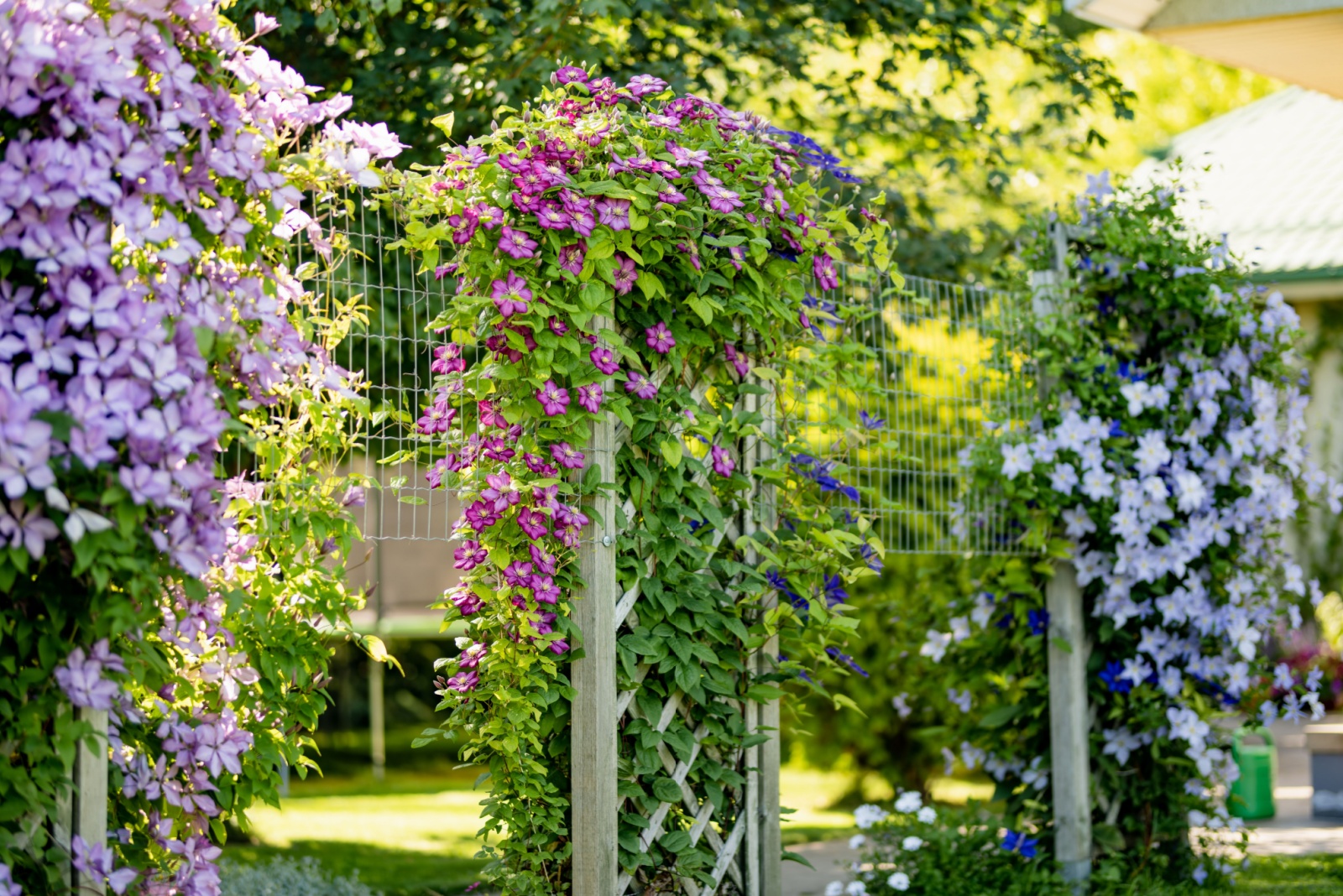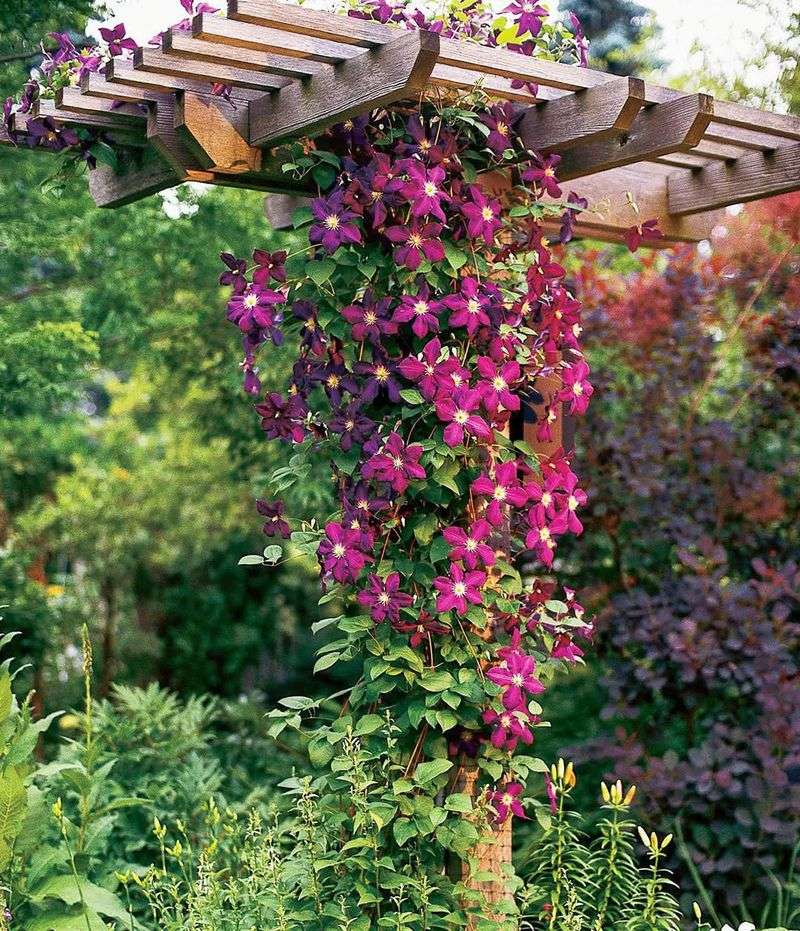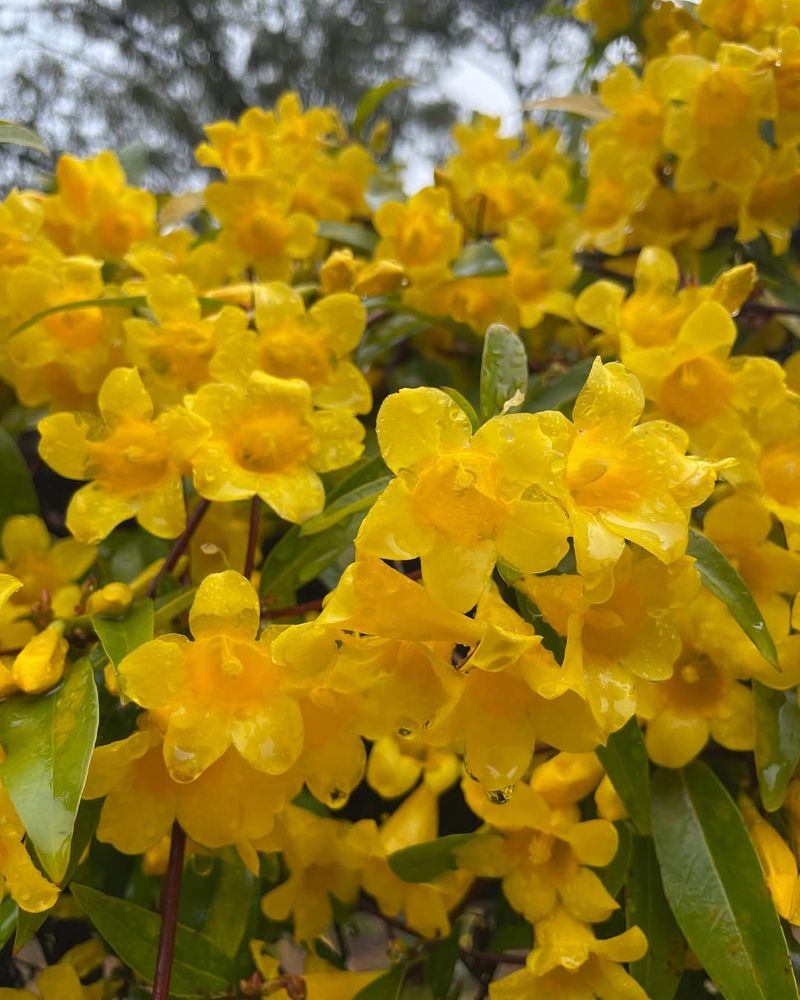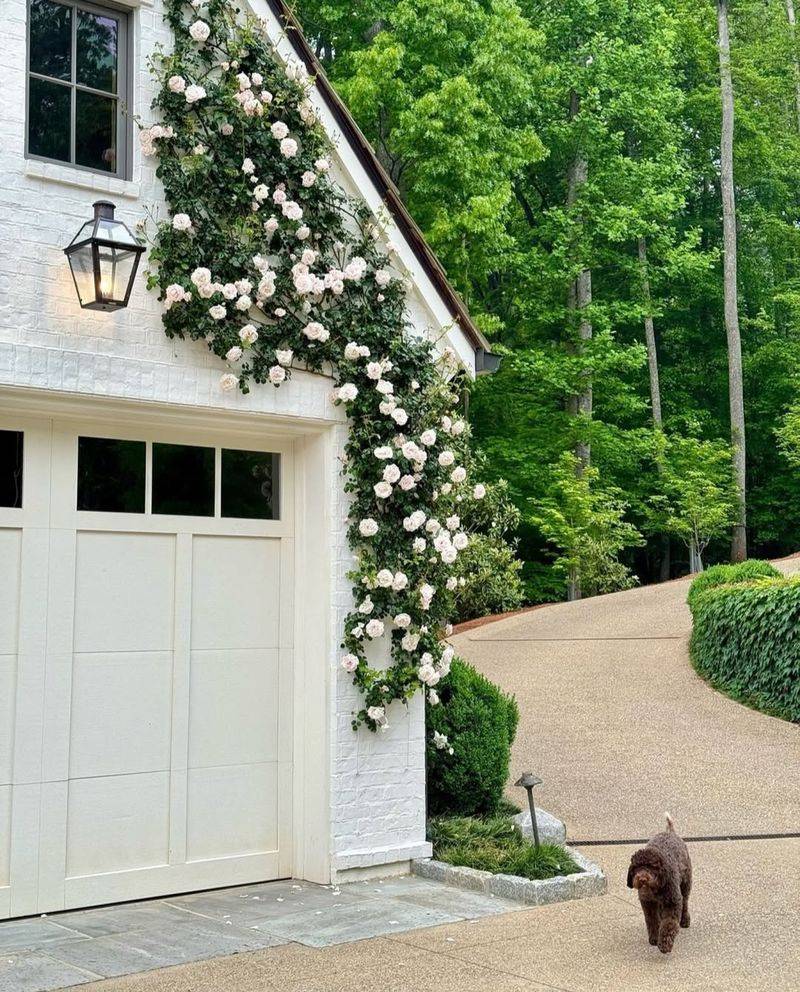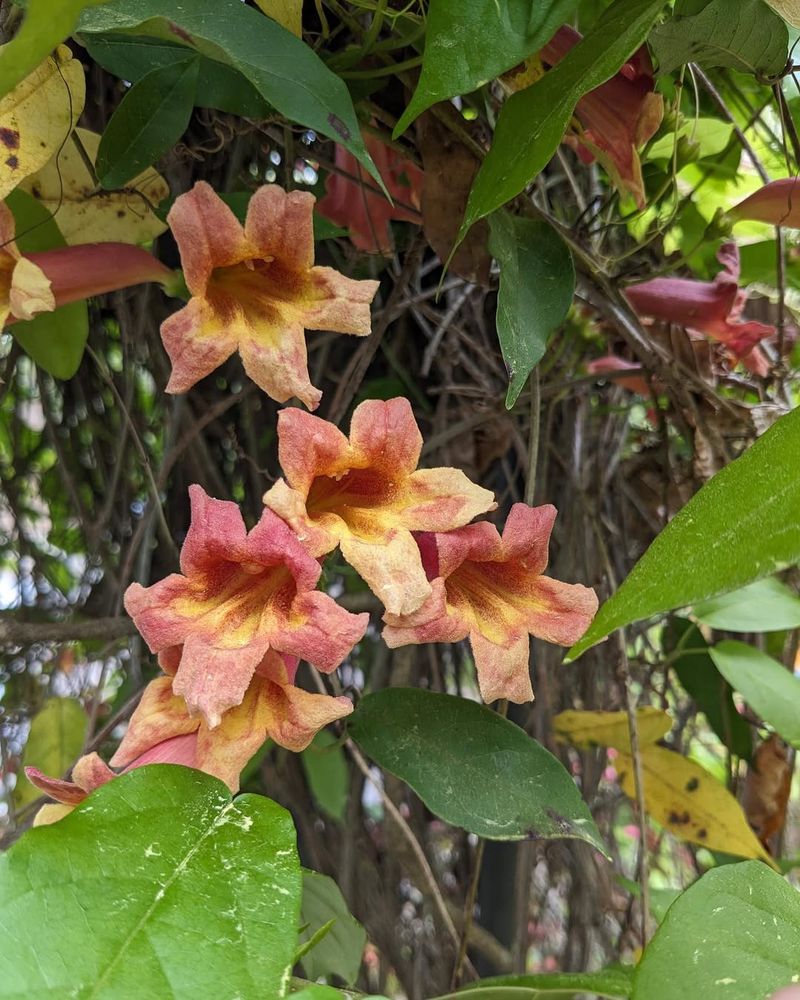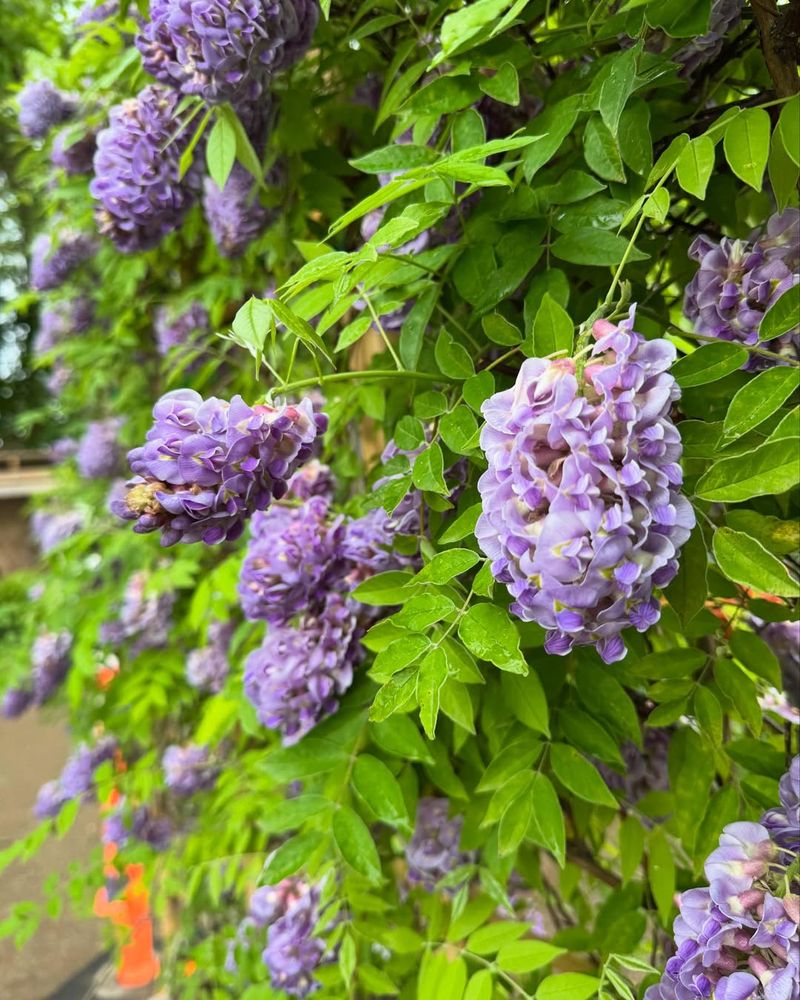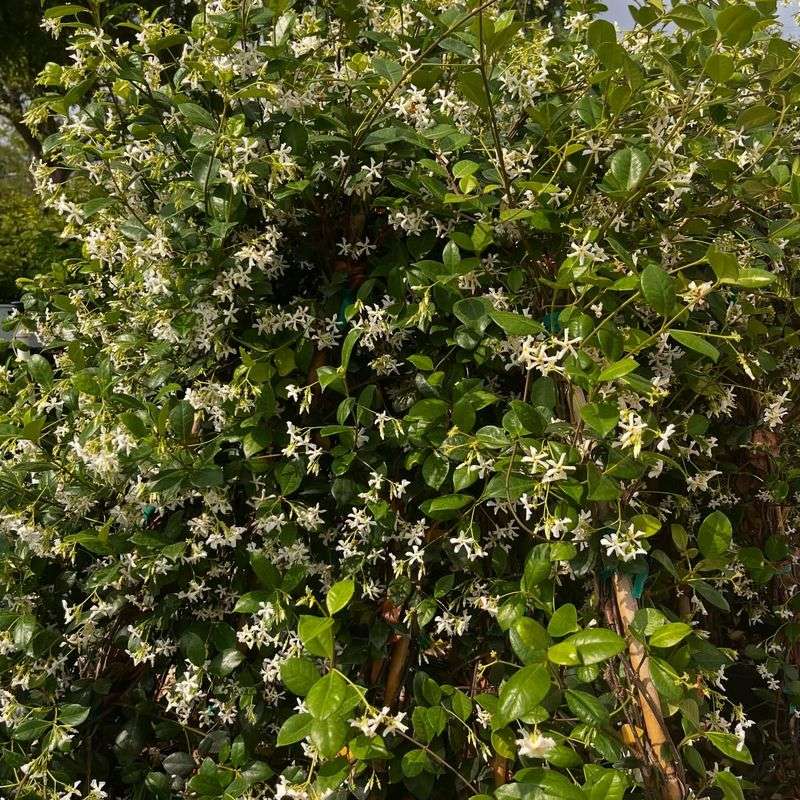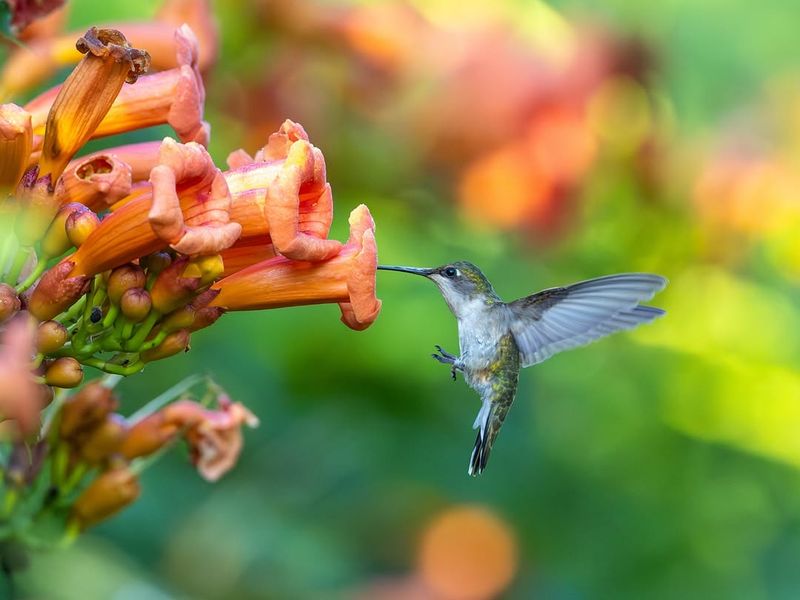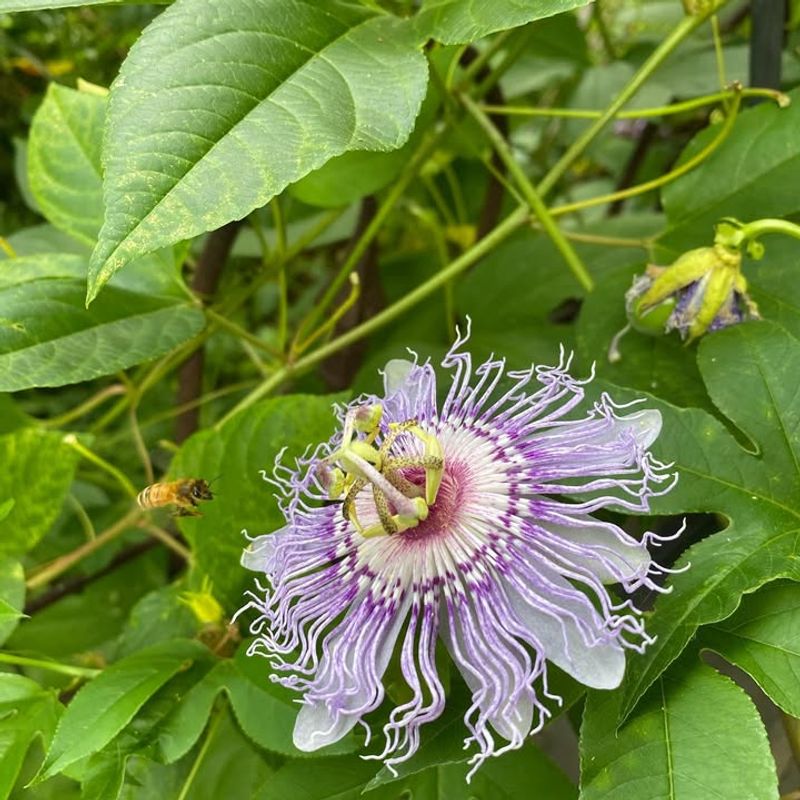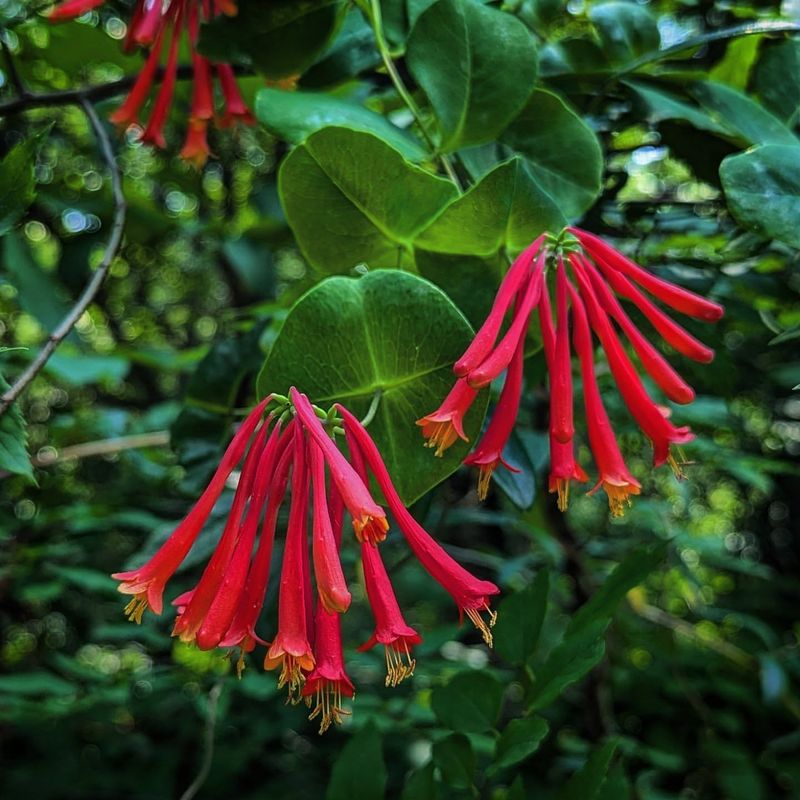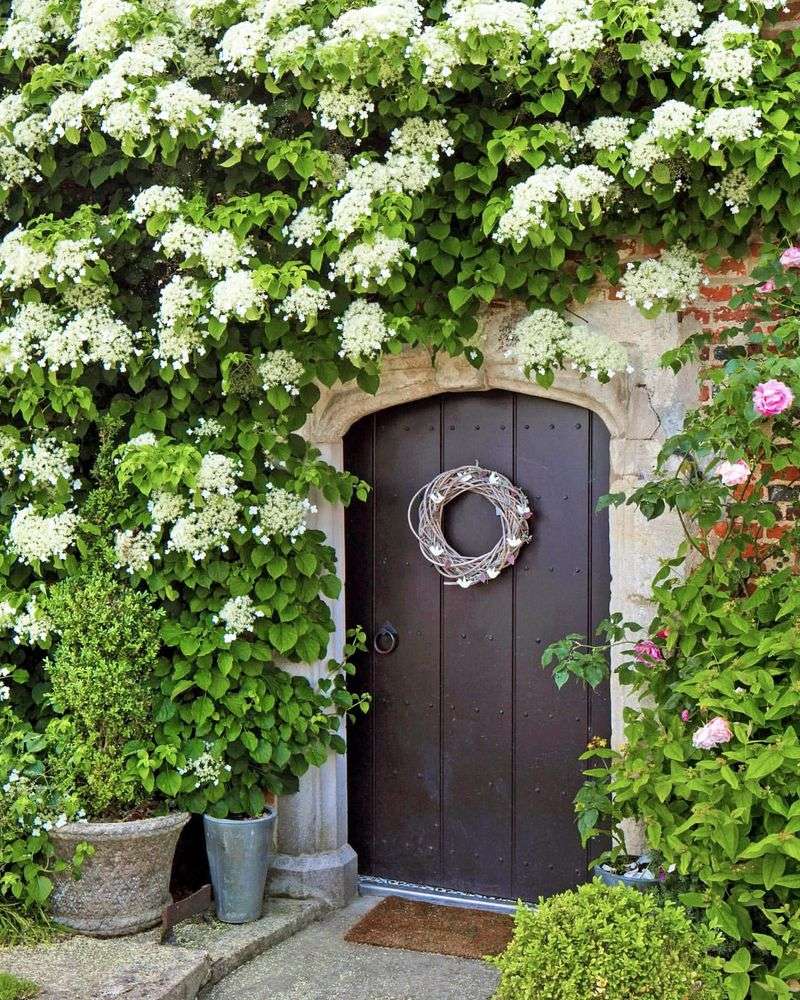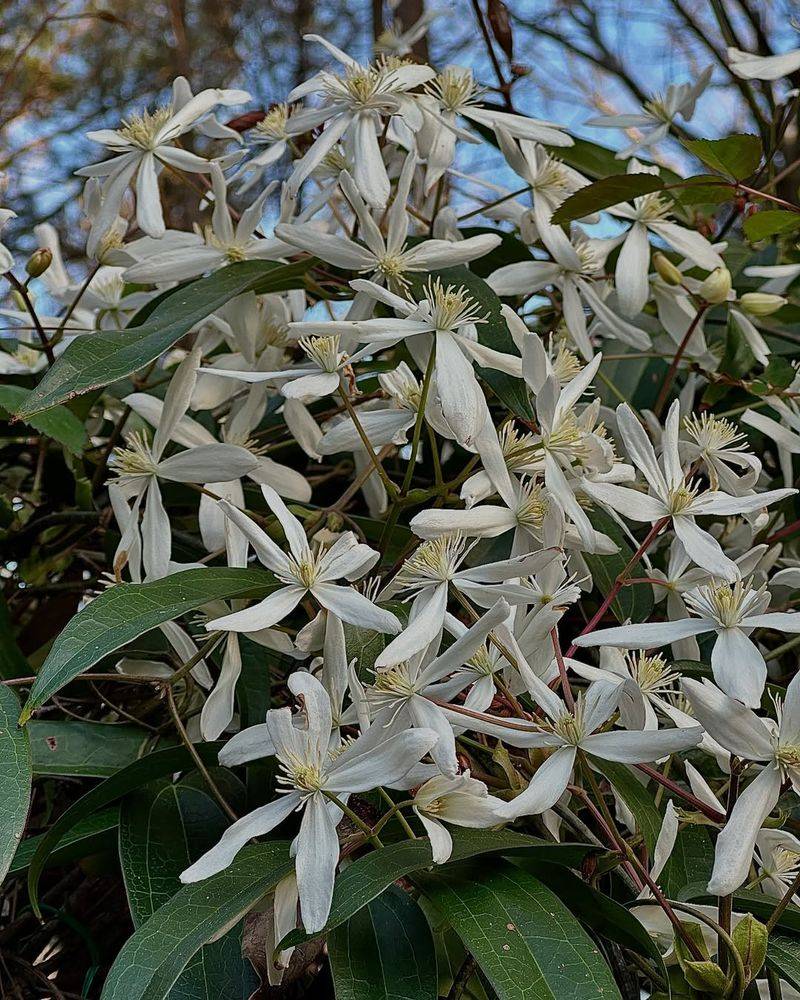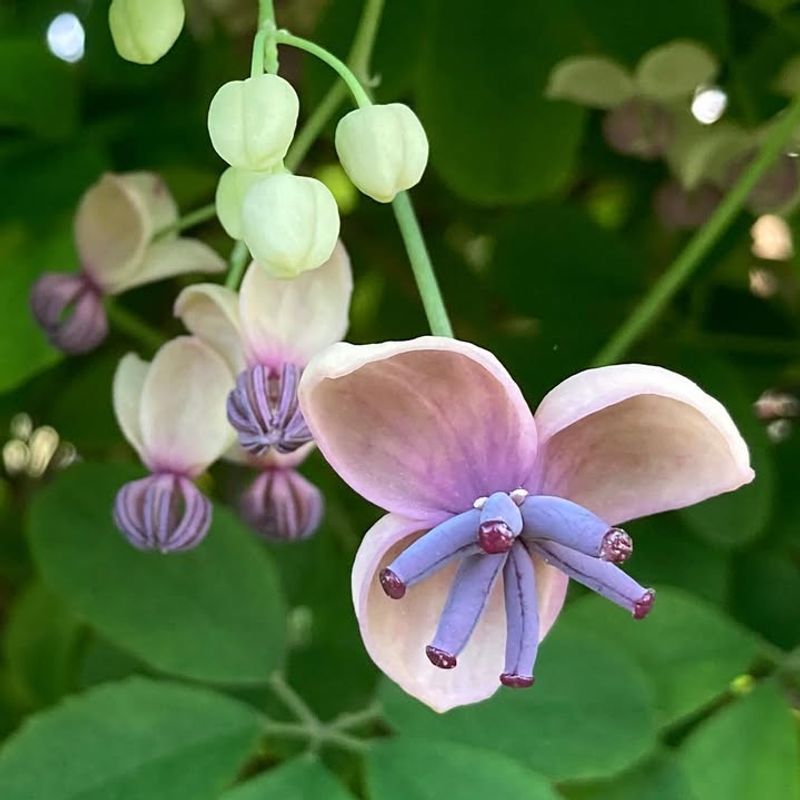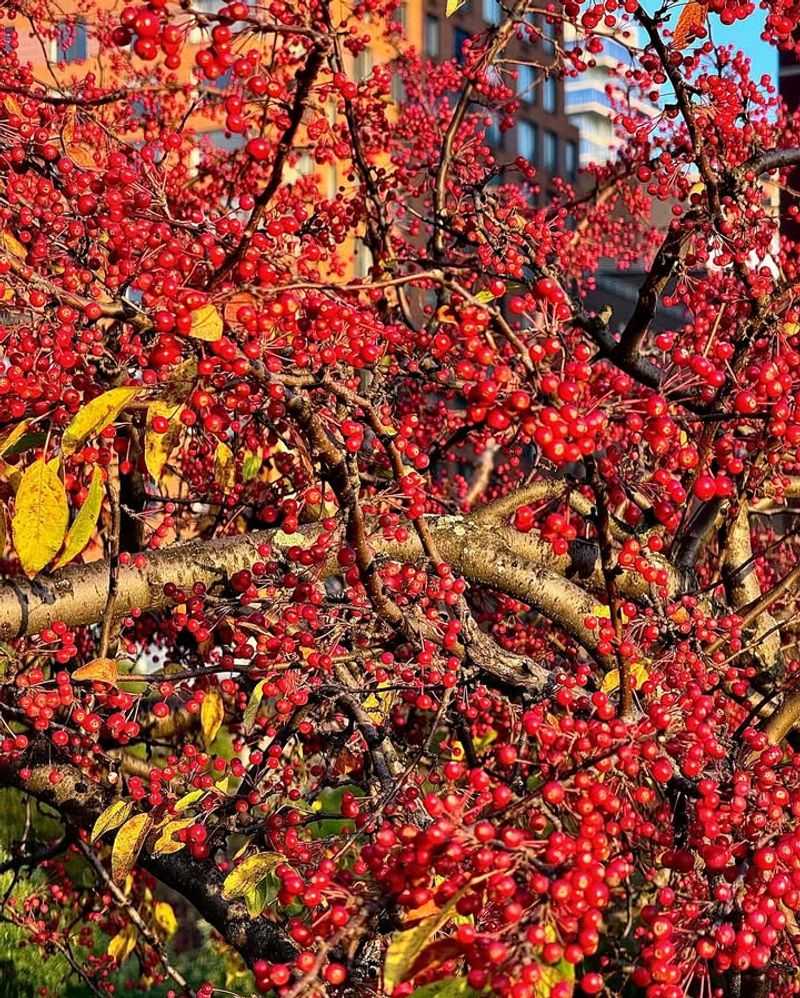Looking to add some vertical beauty to your Georgia garden? Flowering vines can transform plain fences, arbors, and walls into stunning displays of color and texture.
These perennial climbers come back year after year without replanting, saving you time while creating gorgeous garden features that get better with age.
1. Clematis: The Queen Of Climbing Plants
Gardeners treasure clematis for its spectacular blooms in purple, pink, red, or white that appear from spring through fall. These adaptable vines thrive in Georgia’s climate when their roots stay cool and shaded while their tops bask in sunshine.
Most varieties grow 8-12 feet tall, perfect for trellises and fences. Prune according to your specific variety—some bloom on old wood, others on new growth. Look for heat-tolerant varieties like ‘Niobe’ or ‘Jackmanii’ for best results in Georgia gardens.
2. Carolina Jessamine: Georgia’s State Flower
Bright yellow trumpet-shaped blooms announce spring’s arrival when Carolina jessamine unfurls its cheerful flowers. As Georgia’s state flower, this native vine feels right at home in local gardens, climbing effortlessly to 20 feet.
The glossy evergreen foliage provides year-round interest even after the fragrant blooms fade. Plant this low-maintenance beauty near porches where you can enjoy its sweet vanilla-like scent. Just remember all parts are toxic, so keep away from curious pets and children.
3. Climbing Roses: Classic Southern Charm
Nothing captures Southern garden romance quite like climbing roses cascading over an arbor. Choose repeat-blooming varieties like ‘New Dawn’ or ‘Climbing Cecile Brunner’ for months of gorgeous flowers and intoxicating fragrance.
Unlike many climbers, roses don’t actually climb—you’ll need to gently tie their canes to supports. Morning sun with afternoon shade works best in Georgia’s hot climate. Regular pruning after the main flush of flowers keeps these beauties in shape and encourages more blooms.
4. Crossvine: Native Beauty With Bronze-Tinted Leaves
Hummingbirds flock to crossvine’s tubular orange-red flowers that appear abundantly in spring, with sporadic blooms continuing through summer. This Georgia native clings directly to surfaces with tiny adhesive discs, eliminating the need for trellises on brick or wooden walls.
The semi-evergreen foliage takes on attractive purple-bronze tints in winter, adding year-round interest. Once established, crossvine laughs at drought and keeps growing with almost no care. Try the cultivar ‘Tangerine Beauty’ for especially vibrant blooms.
5. Wisteria: Dramatic Cascades of Fragrant Flowers
Hanging clusters of lavender, white, or pink blooms create a breathtaking display when wisteria flowers in spring. The sweet fragrance and fairytale beauty make this vigorous vine a garden showstopper.
Choose American wisteria (Wisteria frutescens) over the more aggressive Asian species for Georgia gardens. Plant in full sun with sturdy support—mature vines can weigh hundreds of pounds! Regular pruning keeps this beauty from taking over your garden while encouraging more spectacular blooms.
6. Confederate Jasmine: Sweetly Scented Evergreen
Walking by confederate jasmine in bloom is an unforgettable experience as waves of sweet perfume fill the air. Despite the name, it’s not true jasmine but a star-shaped flowering vine from Asia that thrives throughout Georgia.
The glossy evergreen leaves create a dense screen year-round, making it perfect for privacy. Train it on a trellis or let it ramble as a groundcover. The pristine white flowers appear prolifically in spring, creating a snow-like effect against the deep green foliage.
7. Trumpet Vine: Hummingbird Magnet
Flaming orange-red trumpet flowers attract hummingbirds all summer long to this vigorous native vine. Also called cow-itch vine, trumpet creeper grows rapidly, easily covering arbors, fences, or unsightly views in a single season.
Plant trumpet vine where it has room to spread, as it can become aggressive in ideal conditions. The woody stems develop an attractive shaggy bark with age. Regular pruning in late winter keeps it manageable and encourages more of the spectacular tubular blooms that make this vine so popular.
8. Passionflower: Exotic Native Beauty
Georgia gardeners can grow their own exotic-looking flowers with native passionflower vines. The intricate purple, white, and yellow blooms look almost tropical but belong naturally in our landscape, followed by edible yellowish fruits.
Beyond their beauty, passionflowers serve as host plants for Gulf fritillary butterflies. The vines die back in winter but return reliably from their roots each spring. Plant in full sun to light shade where they can climb 8-12 feet on a trellis or fence.
9. Honeysuckle: Nostalgic Sweetness
Childhood memories of drawing sweet nectar from honeysuckle flowers make this vine a sentimental favorite. Instead of the invasive Japanese variety, plant native coral honeysuckle (Lonicera sempervirens) for responsible gardening.
The tubular red flowers with yellow throats bloom from spring through fall, attracting hummingbirds and butterflies. Semi-evergreen in Georgia, this well-behaved climber reaches 10-15 feet tall. It thrives in average soil and requires minimal maintenance once established—just occasional pruning to shape.
10. Climbing Hydrangea: Shade-Loving Elegance
Unlike most flowering vines, climbing hydrangea thrives in shade, making it perfect for north-facing walls or woodland gardens. The lacy white flower clusters appear in late spring against heart-shaped leaves, creating months of elegant beauty.
Patience rewards gardeners who plant this slow-starter—it can take 2-3 years to establish before vigorous growth begins. Once settled in, climbing hydrangea can reach 30-40 feet with support. The peeling cinnamon-colored bark adds winter interest when leaves drop.
11. Evergreen Clematis: Winter Flowering Wonder
While most vines rest in winter, evergreen clematis bursts into bloom with fragrant star-shaped white flowers against glossy dark foliage. This Mediterranean native adapts beautifully to Georgia gardens, particularly in the southern parts of the state.
Growing 15-20 feet tall, evergreen clematis needs sturdy support and protection from harsh afternoon sun. Plant where you can enjoy the vanilla-scented blooms from December through February. Prune lightly after flowering to maintain shape and control size.
12. Chocolate Vine: Unusual Fruits And Flowers
Chocolate vine earns its name from the subtle cocoa fragrance of its unusual purple-brown flowers that dangle in clusters each spring. Also called five-leaf akebia, this semi-evergreen climber maintains interest beyond bloom time with its distinctive palmate leaves.
In late summer, purple sausage-shaped fruits may appear, splitting open to reveal edible pulp with a sweet flavor. Growing 15-30 feet, chocolate vine thrives in part shade to full sun throughout Georgia. The twining stems need support but aren’t as heavy as some other vines.
13. American Bittersweet: Fall Color Spectacle
Fall gardens burst with color when American bittersweet reveals its brilliant orange-yellow capsules that split open to showcase scarlet berries. These showy fruits persist into winter, attracting birds and providing material for holiday decorations.
Unlike its invasive Asian cousin, native American bittersweet (Celastrus scandens) behaves well in Georgia gardens. Plant both male and female vines for fruit production. The deciduous vines grow 15-20 feet and prefer full sun. Prune in late winter to control size and shape.

